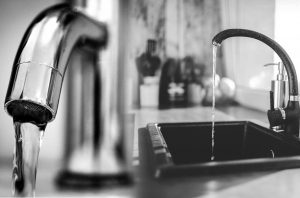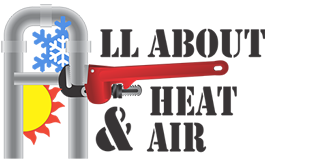
Learn The Tricks To Avoid Any Major Problems With Your Plumbing.
Plumbing has been with us since way back in the Roman times, but much has changed between then and now. Today’s modern homes come equipped with luxurious hot and cold water throughout. Plumbing is great when it works, but when it fails, the house can turn into a horrible, soggy mess. The best thing to do is to be on the lookout for plumbing issues ahead of time so that you don’t have a bad situation on your hands.
Keeping an Eye Out for Trouble
Savvy homeowners are good at finding ways to deal with small plumbing issues before they become big plumbing problems. Help your plumbing remain dry and happy with these ideas:
- Watch out for trouble. With plumbing, always remember that little leakages can quickly become big plumbing problems. Look out for any sign of an impending plumbing failure: damp cabinets, rocking toilets, leaking faucets, or leaking fridges all are serious issues that need to be quickly addressed.
- Quickly repair problems. You don’t want ignore a dripping faucet. Why? Because a dripping faucet is extra moisture that puts wear on sink components. This extra moisture can quickly cause the growth of mold and mildew. Watch out for these types of issues to keep the home dry.
- Find your home’s primary shut-off valve. Imagine a worst-case scenario where you’ve got water pouring down your stairs in the basement from a damaged pipeline…and you don’t know where your water shut-off valve is. This is why you should find your shut-off valve before you have an emergency.
- Know your appliances. Make sure you know how to turn off water going to sinks, toilets, washing machines, and the fridge’s ice maker. Knowing this is crucial for addressing leaks and other situations that could suddenly arise.
- Find your drain valve. Search for your home’s primary sewer valve. This is a valve that gives access to a clogged sewer line. Knowing the valve’s location is helpful when toilets are overflowing.
- Use your tools: With just a few tools and a little knowledge, most of us can learn how to handle small plumbing problems. You just need to add a pipeline wrench, a plunger, and a sewage system snake to your tool kit. These tools will allow you to take care of small problems like blocked drain pipes, blocked toilets, stuck valves, and dripping faucets.
Be Ready for Cold Snaps
In the dead of cold winter nights, freezing pipes can create serious emergencies. Why? When water freezes, it expands pipes, which can cause pipelines to crack. When the area warms up, the pipelines burst and water goes everywhere. Frozen water expands, cracking pipelines; when the area defrosts, water bursts through the cracks, potentially flooding your house. Don’t let this happen to you! Try these suggestions:
- Use insulation to prevent frozen pipes. What you can do is insulate exposed pipes in a crawl space or basement with specialized, easy-to-install plastic insulation. This special insulation is a peel-and-stick solution that can be purchased at your local Lowe’s or Home Depot, peeled off, and stuck right on the pipes.
- Winterize your house. Before the onset of winter, disconnect your outside houses and apply insulating caps to outdoor fixtures. A frozen exterior spigot can damage interior pipes.
- Snap into action during a cold snap. As soon as the cold front moves in, snap into action and open cabinets beneath sinks and bathroom fixtures, set up radiator heaters in your garage, and open up taps to a bare trickle (keeps water flowing and prevents a frozen blockage). Warmer household air will help prevent the pipes inside from freezing.
- Don’t panic if pipes freeze. The first thing you need to do is shut off your water supply to your house (using your water shut-off valve). Then, open a faucet near the blocked area to vent vapors from the frozen water. If you think your hot water pipes are frozen, go ahead and turn off the hot water heater. Use a hair dryer to warm the frozen pipe, starting at the end of the pipe nearest to the tap. You’ll know the pipe has begun to thaw when water begins to trickle from the open faucet. When the flow is restored, check the plumbing carefully for cracks or leaks.
How to Maintain Your Water Conditioning Systems
In areas that have hard-water areas, water softeners are great because they condition water to remove unwanted minerals. The thing about softened water is that it extends the life of appliances, uses less soap, and prevents mineral buildup in pipes.
Keep your water conditioning system running with good maintenance. Many models have a salt-exchange method that requires a steady supply of salt nuggets. Check the manufacturer’s requirement and use the salt recommended by them. Keep an eye on the brine tank to make sure that the salt levels are high enough over the water line. If you see a crust of salt that forms over the top of the brine tank, break it up by poking the crust with a broomstick or adding hot water to the tank.
After being used for a while, water softeners will need to recharge: The unit will flush collection areas of accumulated mineral particles pulled from hard water. If your unit requires manual recharging, stick carefully to the manufacturer’s recommended time intervals. If your unit offers an automatic regeneration scheduling, use it — you’ll have soft water automatically.
Reducing Water Usage in Your Household
These days, being a sustainable household means conserving water. Try these suggestions to lower water use at your house:
- Use the dishwasher. Hand-washing dishes actually wastes a lot of water. Automatic dishwashers use less hot water and energy than washing by hand. Also, most modern dishwashers are designed to remove food and grease without you having to pre-wash or pre-rinse the dishes.
- Use low-flow toilets. Replace older toilets with newer low-flow toilets, which use less water.
- Take short showers. Keep your showers short to save water and money. Also, you can install a low-flow showerhead. These shower heads use about 50 percent less water than older models.





